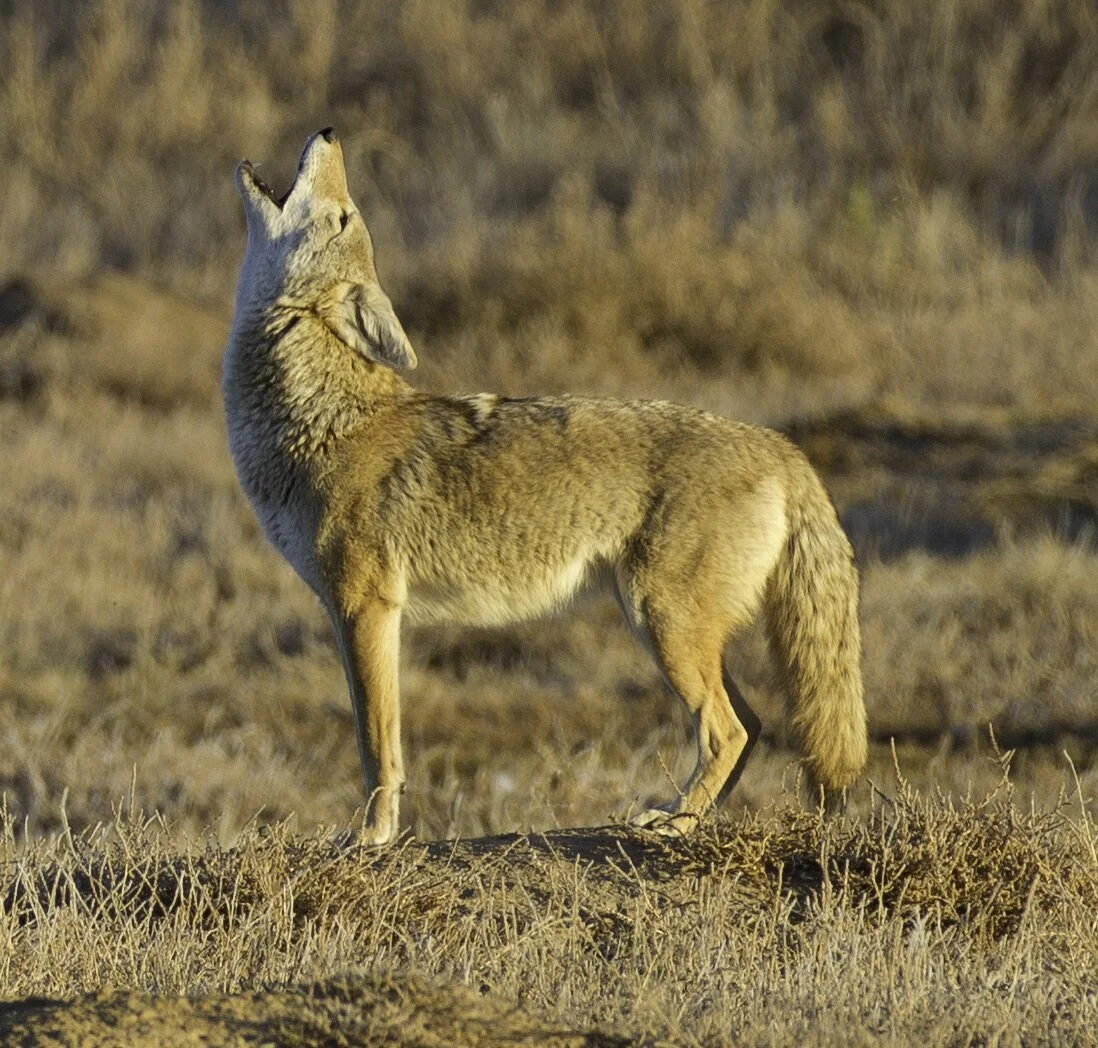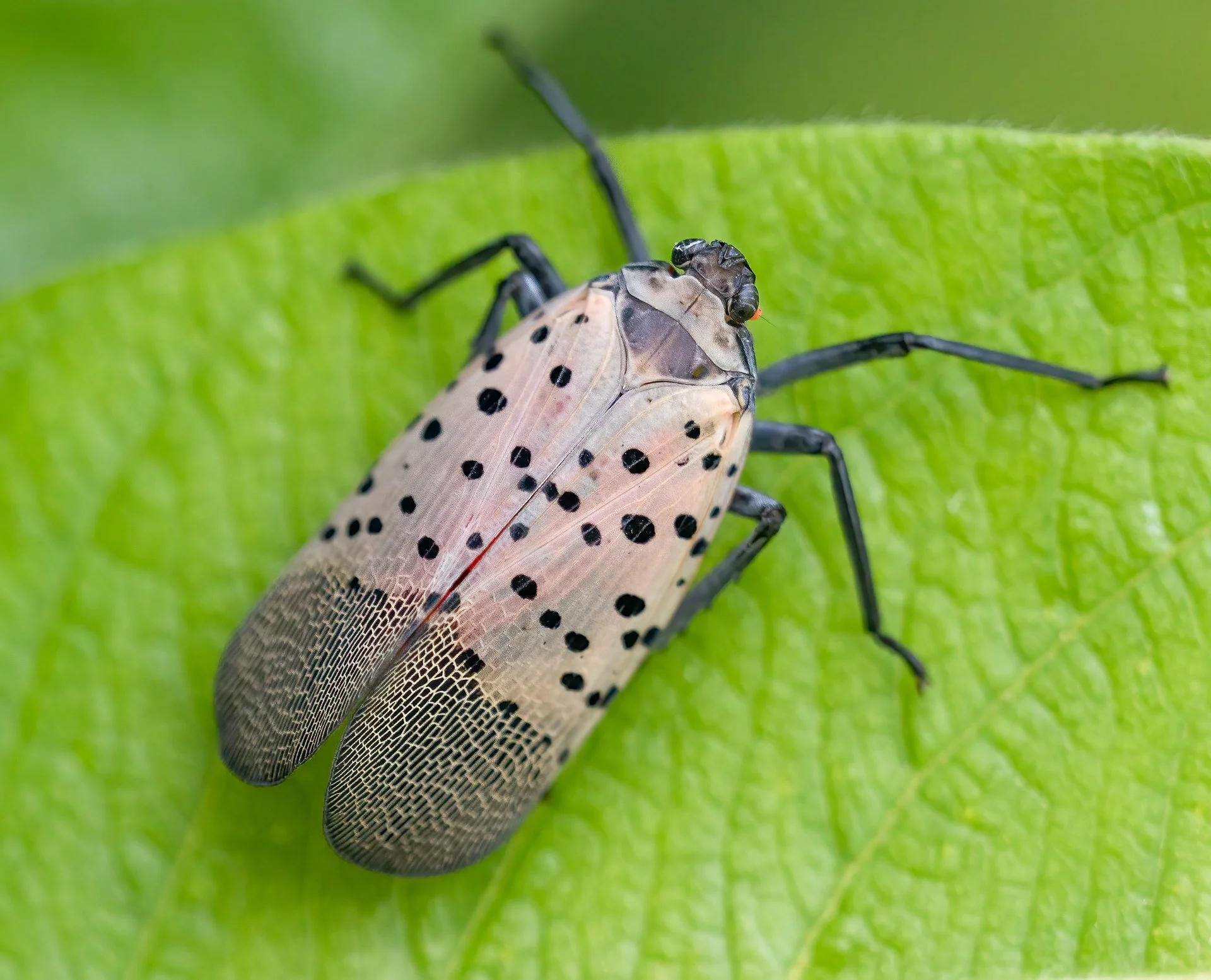
Invasive (like us) and relentless
Crying for supper in suburbia
From Robert Whitcomb’s “Digital Diary,’’ in GoLocal24.com
There’s lots of talk and worry about coyotes in and around New England urban areas. We’d better get used to them. They’re smart and opportunistic. Their increasing numbers show how some wild animals can and must adapt as people take over more and more of the Earth’s space.
You might call coyotes invasive species in these parts, but then so are we, if you go back far enough. And maybe, like dogs, their canid cousins, they too will ultimately be domesticated. Maybe even raccoons, who have also become suburbanites and even urbanites, will be domesticated. They’re quite intelligent creatures. (Even moose, who aren’t smart, are wandering into some New England cities, such as Worcester.)
But keep your house cats inside. Coyotes will kill and eat them. But then, cats kill many, many songbirds so…
— Photo by Rhododendrites
Meanwhile, gird yourself for the Spotted Lanternfly, an invasive species moving into southern New England, aided and abetted by global warming. The Pennsylvania Dept. of Agriculture reports:
“The spotted lanternfly causes serious damage including oozing sap, wilting, leaf curling and dieback in trees, vines, crops and many other types of plants. In addition to plant damage, when spotted lanternflies feed, they excrete a sugary substance, called honeydew, that encourages the growth of black sooty mold. This mold is harmless to people; however, it causes damage to plants.’’
If you see any of these execute as many as you can. But happily, it will take a while for Burmese pythons to make their way up here from Florida.
Grace Kelly: Prepare for the arrival of a colorful and messy Asian invader
Spotted lanternfly
— Photo by Lawrence Barringer/Pennsylvania Department of Agriculture
From ecoRI News (ecori.org)
A tiny, winged invader is making its way up the Mid-Atlantic Coast. Rhode Island is holding out, but only just so. The Spotted Lanternfly has already reached other states — Massachusetts, Connecticut, and New York — and experts are worried that it could make its way here.
“There was one interception in Massachusetts and one in Connecticut,” said Cynthia Kwolek, senior environmental planner at the Rhode Island Department of Management’s Division of Agriculture. “An interception is when they find an insect but they don’t find any additional insects or infestations. But it’s usually an indicator that there are shipments going to this area from the infested area, and they usually find more infestations within a few years after an interception.”
Hailing from Asia, the Spotted Lanternfly made its first documented U.S. appearance in 2014, when a female snuck onto some imported building materials that were brought to Berks County, Pa.
“They are very good travelers, and their egg masses are relatively inconspicuous, so they lay their eggs on pretty much anything,” Kwolek said. “So if somebody is moving to another area from the infested area, they might not notice that they have egg masses laid in some of their tire wells, or in the undercarriage of the car.”
With the Spotted Lanternfly comes swarming, sap sucking and general unpleasantry.
“They swarm and aggregate on trees,” Kwolek said. “So there could be a tree with 500 adult insects. They also excrete honeydew, which is a byproduct of their feeding from the sap in the trees. It’s sticky and can attract ants and wasps.”
Kwolek also noted that this can be a nuisance for homeowners. During one of her visits to Pennsylvania, she saw backyard decks coated with the sticky substance.
Another issue the Asian insects bring is their choice of food. While their main target is another invasive species, the Tree of Heaven, the Spotted Lanternfly doesn’t stop feeding there. They seem to also like grapevines.
“In the past five years in Pennsylvania, they’ve seen a reduction in grape yield,” Kwolek said. “And here in Rhode Island, we have a couple of hot spot vineyards that are great tourist attractions and if this insect was to come here and target those vineyards, it could be harmful to the growers’ income and our tourist economy.”
While there has yet to be a sighting of a Spotted Lanternfly in Rhode Island, the Division of Agriculture is hosting information sessions — the next one is expected to be held in January — to inform the public on what these tiny invaders look like and what to do if one is spotted. In the meantime, Kwolek asks that the public keep an eye out.
“If you see one, take a photo, and if possible, try to catch and freeze the insect, and then we would be able to identify it,” she said.
Grace Kelly is a journalist with ecoRI News.




